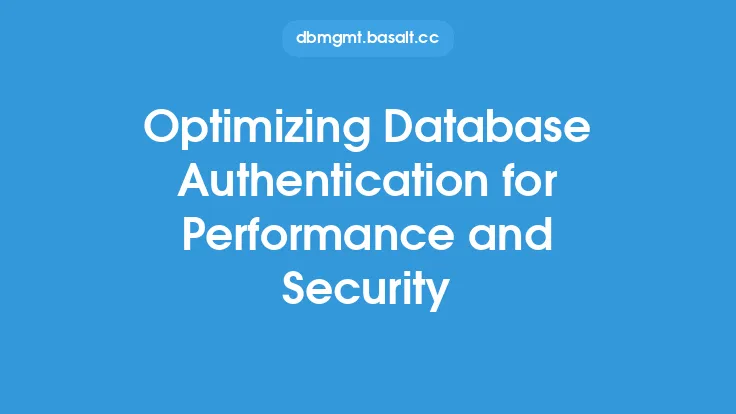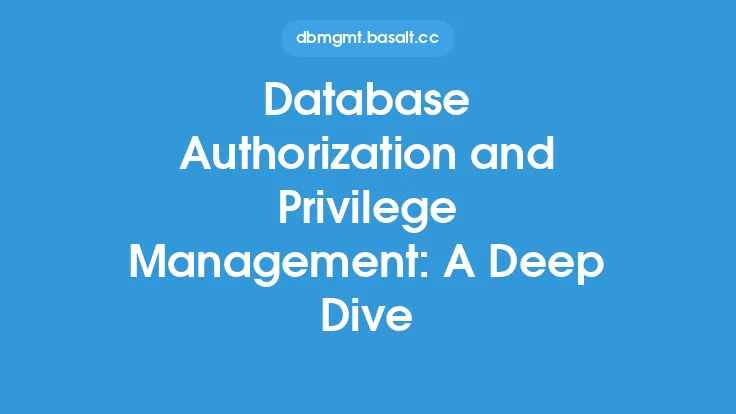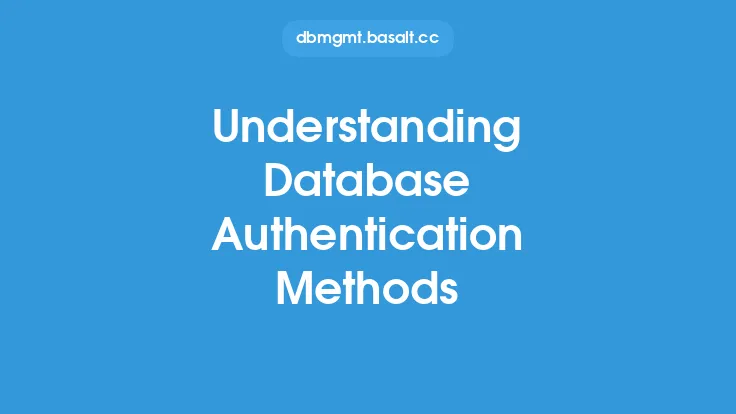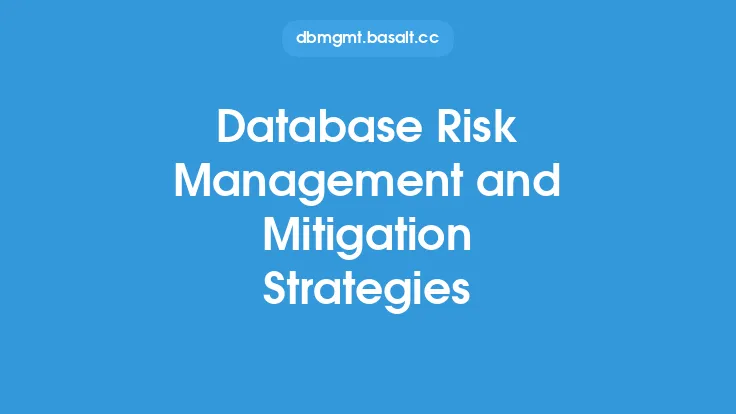Database security is a critical aspect of protecting sensitive data, and authentication is a key component of this process. Authentication is the process of verifying the identity of users, applications, or services that attempt to access a database. In the context of database security, authentication is used to ensure that only authorized entities can access, modify, or manipulate data. This is achieved through a combination of identity management and authentication mechanisms.
Introduction to Identity Management
Identity management refers to the process of creating, managing, and terminating digital identities. In the context of database authentication, identity management involves creating and managing user accounts, roles, and permissions. This includes assigning unique identifiers, such as usernames or IDs, to users and applications, and defining their access levels and privileges. Identity management is a critical aspect of database security, as it ensures that only authorized entities can access sensitive data.
Authentication Mechanisms
There are several authentication mechanisms that can be used to verify the identity of users and applications. These include password-based authentication, certificate-based authentication, and biometric authentication. Password-based authentication is the most common method, where users are required to provide a username and password to access the database. Certificate-based authentication uses digital certificates to verify the identity of users and applications, while biometric authentication uses unique physical characteristics, such as fingerprints or facial recognition, to verify identity.
Database Authentication Protocols
Database authentication protocols are used to facilitate communication between the client and server during the authentication process. These protocols include Kerberos, LDAP, and RADIUS. Kerberos is a widely used protocol that uses tickets to authenticate users and applications. LDAP (Lightweight Directory Access Protocol) is a protocol used for directory services, while RADIUS (Remote Authentication Dial-In User Service) is a protocol used for remote access authentication. These protocols provide a secure and standardized way of authenticating users and applications.
Identity Management Systems
Identity management systems are used to manage and store digital identities. These systems include directory services, such as Active Directory or OpenLDAP, and identity management software, such as Oracle Identity Manager or IBM Security Identity Manager. These systems provide a centralized repository for storing and managing digital identities, and offer features such as user provisioning, password management, and access control.
Authentication and Authorization
Authentication and authorization are two related but distinct concepts. Authentication is the process of verifying the identity of users and applications, while authorization is the process of determining what actions they can perform on the database. Authorization involves assigning permissions and access levels to users and applications, and ensuring that they can only perform actions that are authorized. This is achieved through the use of access control lists (ACLs), role-based access control (RBAC), and attribute-based access control (ABAC).
Database Authentication and Identity Management Best Practices
While there are best practices for database authentication and identity management, some general guidelines can be applied to ensure the security and integrity of the database. These include using strong passwords and multi-factor authentication, implementing least privilege access, and regularly reviewing and updating access controls. Additionally, using a centralized identity management system can help to simplify the management of digital identities and ensure consistency across the organization.
Technical Implementation
From a technical perspective, database authentication and identity management involve a range of components and technologies. These include authentication protocols, such as Kerberos or LDAP, and identity management systems, such as directory services or identity management software. Additionally, databases often have built-in authentication mechanisms, such as password-based authentication or certificate-based authentication. These mechanisms can be configured and managed using database management tools, such as SQL Server Management Studio or Oracle Enterprise Manager.
Security Considerations
Database authentication and identity management have significant security implications. If not implemented correctly, they can provide a vulnerability that can be exploited by attackers. Some common security risks include password cracking, privilege escalation, and identity spoofing. To mitigate these risks, it is essential to implement strong authentication mechanisms, such as multi-factor authentication, and to regularly review and update access controls. Additionally, using encryption and secure communication protocols, such as SSL or TLS, can help to protect sensitive data in transit.
Conclusion
In conclusion, database authentication and identity management are critical components of database security. They involve verifying the identity of users and applications, and determining what actions they can perform on the database. By using a combination of authentication mechanisms, identity management systems, and access control, organizations can ensure the security and integrity of their databases. While there are many technical and implementation details to consider, the key principles of database authentication and identity management remain the same: to protect sensitive data and prevent unauthorized access.





